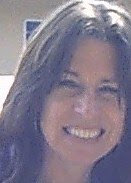mat(ter)
The heart of the mat(ter)
What do asanas teach? How does practice allow a theory of yoga to arise? And how does a philosophy of yoga, personal as it is when gained in this way, mesh with the sutras?
Seeking yoga to colonize my body—a body controlled, subdued and pushed to its limits, but rarely trusted or heard—the last thing I wanted to do was approach yoga intellectually. My head was too heavy for my neck already. So I set aside the books, listened to my teachers and to those signals arising faintly from within.
I realised that there was work I had to do that only I could do. If I couldn’t sense the placement of my shoulder blades in an asana, there was no other route to awareness. I couldn’t wire up my rhomboids and watch the sparks fly at muscle contraction. I became aware of vast silent areas in my body. What had felt like tension and pain--signature patterns of holding myself—instead felt something left in place so long as to grow numb and hard with the effort. Like a body storing old forgotten actions that now felt like stillness, like zones of inertia. It was as though I were a ragdoll and some of the parts of my body had been filled with concrete instead of pliant stuffing, some areas stitched up altogether with no enquiring awareness passing though. It was like a psychic numbess. How had I not noticed?
When I started it seemed obvious to me that yoga was about flexibility, and I celebrated the parts of me that could move like cooked spaghetti. Until I realised that a gymnastic flexibility almost got in the way of grasping what yoga is. The fleeting temporality and changes appeared in what I had stolidly called ‘my body’; the morning body- so different from the evening body, left from right, post-deadline body quite different from holiday calm; the multiplicity of ways of being in what before had been ‘my body’ astounded me. I could no longer clearly state what it could do, because some days it could do far more, some days would stop short of that. The variability of the lived body revealed to me how much I had imposed a conception of body on my fleshly, changing, breathing one. The unthinking imposition of ‘what I can do’ reeled back, I found a pliant, shifting, asymmetric responsive body that had much to tell me about how I was living. The discipline of yoga was about an openness that undermined every assumption. It was not the steely discipline of ‘go for the burn’ of reinterpreting as desirable signals of pain and anaerobic respiration in tired muscles. Neither was it a sleekly staying well within a personal comfort zone. It was, and is, about learning to breathe in impossible places—on the mat and off. It is about how to stay at one’s limit long enough and calmly enough to find out if that truly is one’s limit. To explore how to be there with the breath finding quietness, dissolving the mind-closing panic, listening to the body. What can you see in backbends? My friend Melanie’s gem. One need not drown in effort. How can you find space in the body to move into a pose, in time with breath, rather than jamming, pushing, forcing?
It feels a perfect antidote to my urban, western mode of achievement. Gymnastic endpoints forgotten, I discovered process in the most signature form What pattern of breath, what quality of mentality does this pose give at first? How does a change in attitude to the strong sensations of one’s limits make it possible to stay there, to listen? Active stillness, detached immersion, effortless effort, powerful calm. No longer paradoxes, the ends of my former opposites enfolded as readily as my legs and spine.
I hadn’t counted on this mental effect. Hadn’t counted on the fresh discovery of rhythm – a time for effort—the guiltless repose. A rhythm of working replaced ‘going to the max’. I was over my own heels more in life, more balanced, more expansive. There was more trust in my inner sensations, and more of them to be trusted. My heart raced with coffee, it made my mind flip around rather than immerse itself in what I was reading, who I was listening to. I noticed a cooked quality to the breath that standing poses brought when I had had wine the night before a practice.
The vulnerability of going to one’s limits showed in unexpected ways: a shyness at demonstrating; a limitation, or a way of working. Reaching a point where one’s bodily awareness petered out, where a necessary local adjustment, suggested by the teacher’s voice, couldn’t be made—the body unable to turn the words into subtle shifts and actions. The teacher’s hands-on help at that moment effecting skilled adjustment with timely words lead to an incorporation of knowledge, a personal discovery of new pathways of accessing movement. And when with a good teacher it is I done with clarity, focus and a sense of kindness, vulnerability becomes openness, a willingness to reach and surpass limits again. Yoga, on the mat or off, is about learning to breathe in impossible places.


0 Comments:
Post a Comment
<< Home